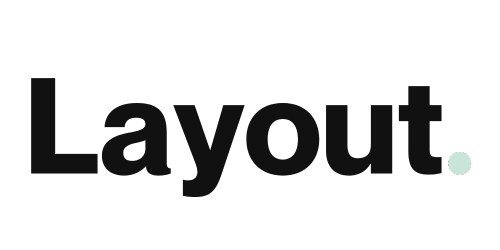Logos play a critical role in branding, serving as the visual representation of a company's identity. They encapsulate the essence of a brand in a single design, making it easily recognizable and memorable.
There are seven main types of logos, each offering unique advantages:
- Monogram Logos
- Wordmark Logos
- Pictorial Mark Logos
- Abstract Logo Marks
- Mascot Logos
- Combination Marks
- Emblem Logos
Understanding these different types can help you choose the right logo for your brand's identity, ensuring it aligns with your business goals and resonates with your target audience.
The purpose of this article is to provide an in-depth look at each type of logo, complete with examples and tips for effective design choices. By exploring these options, you can make informed decisions that strengthen your branding strategy.
1. Monogram Logos

Monogram logos, also known as letter marks, consist of a few letters, usually the initials of a brand or company name. These logos strip down the brand to its core identity, creating a minimalist and sleek representation.
Definition and Characteristics
- Simplicity: Monogram logos focus on simplicity by using only the initials of the brand.
- Typography: The design heavily relies on the choice of font and style to ensure memorability and recognition.
- Adaptability: These logos work well across various mediums, from business cards to large billboards.
Examples
- IBM: The IBM logo is a classic example where simplicity meets strong brand recognition. The three letters are enough to instantly recognize the tech giant.
- CNN: CNN utilizes a bold and clean monogram that is easily identifiable, even at a glance.
Benefits
- Simplicity: By reducing the logo to just initials, it becomes easier for consumers to remember and recognize.
- Memorability: A strong typographical representation ensures that the brand stays in the viewer's mind.
For more inspiration on utilizing monograms effectively in your marketing materials, explore LAYOUT's collection which offers a variety of marketing stationery that can be customized with monogram logos.
2. Wordmark Logos

Wordmark logos focus on the business name itself, using custom typography to create a distinctive brand identity. Unlike monogram logos, wordmarks emphasize the entire brand name rather than just initials.
Examples:
- Visa: The Visa logo utilizes clean, bold typography, making it easily recognizable and memorable.
- Coca-Cola: The Coca-Cola wordmark is iconic due to its unique cursive script, which conveys a sense of tradition and authenticity.
Importance of Typography:
Typography plays a crucial role in wordmark logos. It helps in setting the tone and personality of the brand.
- Legibility: Ensuring that the text is readable at different sizes is vital for maintaining brand consistency across various platforms.
- Adaptability: A well-designed wordmark should be versatile enough to be used on everything from business cards to billboard advertisements.
When creating a strong brand identity with wordmark logos, attention to detail in typography can significantly impact how your brand is perceived.
For more personalized branding solutions like calendars or presentation folders that display your company’s logo effectively, LAYOUT offers customizable products. Their stylish calendars can help showcase your personal memories and brand image throughout the year, while their professional folders are perfect for client meetings or important presentations with your brand prominently displayed. Additionally, if you're looking for product labels that ensure each item presents an appealing and professional style, LAYOUT's offerings also cover that need effectively.
3. Pictorial Mark Logos

Pictorial mark logos use icons or graphic representations to symbolize a brand. These types of logos rely heavily on imagery, often portraying a clear and recognizable symbol.
Examples:
- Apple Logo: The iconic silhouette of an apple with a bite taken out is instantly identifiable worldwide.
- Twitter Bird Icon: The simple yet effective bird icon symbolizes Twitter's brand and its focus on social connectivity.
Advantages of Pictorial Mark Logos:
- Instant Recognition: Visual symbols can be immediately recognized, making it easier for consumers to remember your brand.
- Versatility: These logos can be used across various marketing materials, including print advertising and digital platforms.
For brands looking to create immediate recognition through visual elements, pictorial mark logos offer a compelling solution.
4. Abstract Logo Marks

Abstract logo marks use simplified visual representations that don't directly show an object but convey brand meaning through design elements like color and shape. These logos are perfect for brands wanting to evoke specific emotions or ideas without using literal images.
Examples
- BP Starburst Logo: The BP logo uses a vibrant burst of green and yellow, symbolizing energy and environmental consciousness.
- Pepsi Circle Logo: Pepsi's divided circle employs dynamic shapes and colors to convey a sense of refreshment and modernity.
Conveying Brand Meaning
Abstract logos are great at delivering complex brand messages through:
- Color: Colors can evoke specific emotions and associations. For example, blue often represents trust and reliability, while red can signify excitement or urgency.
- Form: Shapes and lines create a visual language that communicates brand values. Curved lines may suggest friendliness, whereas sharp angles can imply innovation or precision.
These elements together build a strong, recognizable identity without directly representing physical objects.
5. Mascot Logos

Mascot logos play a unique role in branding by embodying the personality of a brand through characters. These logos are particularly effective in creating emotional connections with consumers, making brands more relatable and memorable.
Examples
- Kool-Aid Man: The Kool-Aid Man is an iconic character that embodies the fun and refreshing nature of the Kool-Aid brand. His enthusiastic "Oh yeah!" catchphrase instantly brings to mind the product he represents.
- KFC’s Colonel Sanders: Colonel Sanders serves as both a mascot and a historical figure for KFC. His image adds a personal touch to the brand, reinforcing its heritage and commitment to quality.
Appeal to Families and Children
Mascot logos often have a strong appeal to families and children due to their friendly and approachable nature. Characters can effectively communicate the brand's values and story, making them an engaging marketing tool.
Highlighting mascot logos on postcards or posters can further amplify their impact, turning these characters into beloved icons. Our Pearl Postcards, crafted with 300gsm pearl texture paper, exude elegance and sophistication, making each card a timeless keepsake that reflects luxury. On the other hand, our customizable posters, crafted using high-quality 157gsm standard art paper, offer endless possibilities with personalized designs that come to life on premium paper.
By utilizing relatable characters, brands can foster loyalty and build lasting relationships with their audience.
6. Combination Marks

Combination marks, also known as hybrid logos, blend wordmarks with symbols or icons to create a versatile brand identity. This type of logo leverages the strengths of both text and imagery, offering flexibility in various applications.
Key Characteristics
- Blend of Text and Iconography: By incorporating both elements, combination marks provide a comprehensive representation of the brand.
- Versatility: They can be used together or separately, depending on the context, which enhances adaptability across different marketing materials.
Examples
- Burger King Logo: The Burger King logo combines bold typography with a graphic element of a burger bun, making it instantly recognizable while reinforcing the brand’s core offering.
- Lacoste Logo: Featuring the iconic crocodile alongside the brand name, Lacoste’s logo exemplifies how combination marks can merge distinctive symbols with clean text.
Benefits for Brand Identity
- Enhanced Recognition: The dual approach ensures that even if one element is missing (text or icon), the remaining part still conveys the brand identity effectively.
- Future Recognition Strategies: As brands evolve, having both elements allows for gradual shifts in branding without losing recognition. For instance, a business might start using just the symbol as it becomes more established.
7. Emblem Logos

Emblem logos are distinctive for their badge-like design, combining text with symbols or icons into a single cohesive image. This style often conveys a sense of tradition and authority, making it a popular choice for brands looking to establish a timeless identity.
Characteristics of Emblem Logos
- Integration of Text and Symbols: Emblem logos seamlessly blend text with graphics, creating a unified design that is both visually appealing and informative.
- Badge-Like Design: These logos often resemble crests, seals, or badges, reinforcing the brand's heritage and credibility.
- Traditional Branding: Emblems are typically associated with established institutions and companies that want to emphasize their long-standing reputation.
Examples
- Starbucks Siren Logo: The Starbucks emblem incorporates the iconic siren within a circular badge, instantly recognizable and conveying a sense of tradition.
- Harley-Davidson Shield Logo: The Harley-Davidson logo combines text and symbol within a shield design, evoking strength and legacy.
Emblem logos provide a traditional feel and authority, making them an excellent choice for brands aiming to project reliability and heritage. For businesses seeking customizable designs that leave lasting impressions, exploring options like customizable thank you cards can complement an emblematic branding strategy. These cards can be tailored to reflect the brand's identity while expressing gratitude in a heartfelt manner.
Moreover, the adaptability of emblems across various marketing materials while maintaining their integrity and impact makes them a versatile branding tool. Brands can also consider leveraging customization options for other promotional materials to further enhance their branding strategy.
Choosing the Right Logo Type for Your Brand's Identity
Legibility and adaptability are crucial factors in effective branding strategies. A logo must be easily readable and recognizable across various platforms, from business cards to digital screens.
Key takeaways from the different types of logos:
- Monogram Logos: Ideal for brands with lengthy names, offering simplicity and easy recall.
- Wordmark Logos: Perfect for companies with unique names, emphasizing strong typography for brand identity.
- Pictorial Mark Logos: Utilize distinctive icons or graphics for instant visual recognition.
- Abstract Logo Marks: Rely on color and form to convey brand essence without direct representation.
- Mascot Logos: Use characters to create a relatable and approachable brand image, especially for family-oriented businesses.
- Combination Marks: Blend text with symbols, ensuring flexibility and enhancing future recognition.
- Emblem Logos: Combine text within symbols, providing a traditional feel and authoritative presence.
When choosing a logo type, consider how each style aligns with your brand’s identity and how it will perform across different marketing materials. For instance, these luxury business cards offer a creative branding material that adds individuality to your brand.

